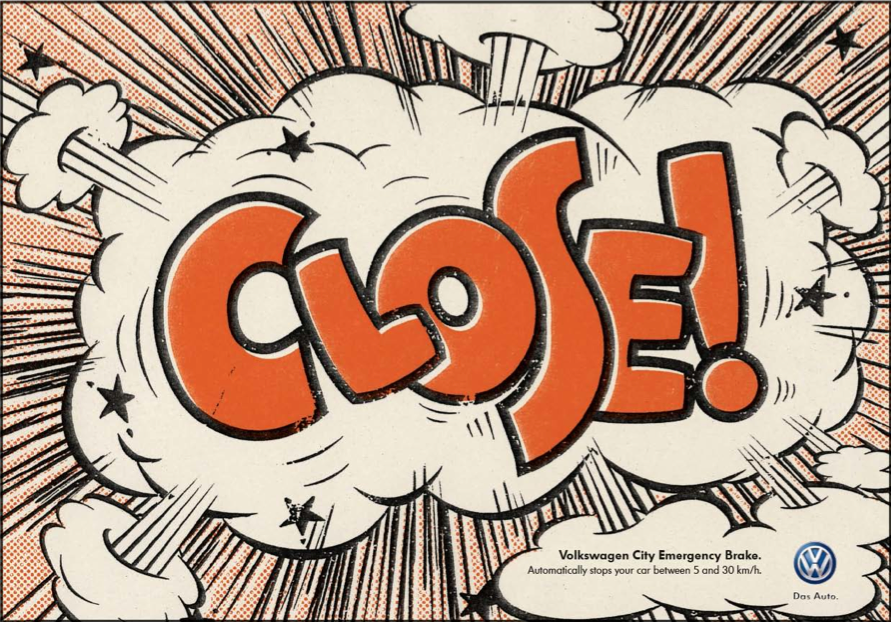
Marmite by Jim Stoten, represented by Big Active Agency
Daniel Moorey is Head of Photography and Illustration at adam&eveDDB. He shares some insights into negotiation from his point of view.
Can you tell us a little bit about yourself?
I studied anthropology and art at the LSE and then did a post grad in arts management. Somehow I then ended up as an art buyer in advertising at AMV BBDO. My current role is as head of photography/illustration at adamandeveddb but I now work across a number of different media that crossover.
As an agency we would work on more than 50 campaigns in the course of a year – and we have to negotiate the contracts, payment – and artistic vision – for each one.
At the start of a job, what are the key elements that you expect to negotiate on?
There are always things that we can negotiate on such as timings, number of executions, rounds of amends and money 🙂
“I would always expect to have some to-ing and fro-ing to get these right. It’s important that everyone is happy, and understands, the agreement.”
Is it important to go through this process? Are there times where there is no negotiation – how does an illustrator know?
“There is always negotiation whether it’s explicit or implicit. As an illustrator you would need to judge how fair the person you are dealing with is.”
Sometimes jobs are what they are and you have to decide whether to take them or leave them but try to use a bit of charm to get more for yourself. The hardball arrogant approach is a big turn off for many commissioners.
A growing feature are cost controllers, sealed bids, triple bids. Cost Controllers/consultants work with an agency producer to get a good deal for their client. Some clients ask or 3 bids from different ‘suppliers’. You are a supplier! In a few cases the bids are sealed in the sense that everyone is given the same brief, everyone submits a cost and the cheapest cost wins the job once the bids are revealed. It’s like the Lottery but not as much fun.
On illustration the costs are usually just illustrator fees (unlike photography where there are the costs of a shoot) so these features can provide an unpredictable element. You need to have confidence in your own value – there is no right or wrong fee – unless it’s wrong for you.

Illustration by Jon Rogers, represented by Phosphor Agency
What makes negotiation easier for you, and for the illustrator?
I think it’s really important to have transparency from all parties so everyone knows what they are in for.
I’m a big fan of getting all the information for a job into one email and then doing a phone call.
“The more clarity upfront the better. If bits of a job are added in stages it can get very messy for everyone.”
If a client is a bit tricky I’ll explain that so forewarned is forearmed. If an art director tends to like quite a few rounds of amends I’ll explain that too where appropriate. I might also outline how much of a creative opportunity is in the job as I see it. Honesty is key rather than being sneaky.
I think one of the most important things from an illustrators perspective is to be able to explain their working process up front so the commissioner knows what type of roughs they will receive and at what stages in the process there is no going back.
Where does negotiation go wrong?
If someone has taken on a job but then resents the money on offer or doesn’t really want to do the job creatively – then the whole project is a challenge for everyone. Be honest with yourself at the start – make sure you have at least asked for what you’d like in terms of money or artistic freedom.
“If you’re not getting what you are happy with really think about not taking the job.”
If an illustrator adds costs after estimate approval without good reason. Everyone should be as clear as possible up front. A change in an agreed budget has big ramifications for us – so it’s good to think through as many situations as possible and discuss upfront.
If the commissioner doesn’t work to understand the artists point of view and to some degree to protect them from the client – that’s our job – and it’s helped immensely by the artist communicating clearly and professionally.
Can you share your top tips on negotiation?
These are what work for me – everyone has to find your own approach and it’s something that I think develops with time.
- Make the other person laugh
- Make them feel a little guilty if you think they aren’t paying enough
- Try to be flexible in how a deal is set up in order to help them to help you. You could split out some of the usage as an option for instance if the money isn’t what you want.
- If you have a lower limit on what you will do a job for, let them know in an apologetic kind of way (even if you don’t feel apologetic.)
- Try and enjoy it.